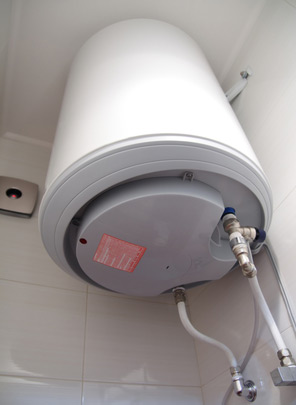Tips on How to Keep Your Home's Hot Water System Functioning WellWays to Effectively Care for Your Home's Hot Water System
Tips on How to Keep Your Home's Hot Water System Functioning WellWays to Effectively Care for Your Home's Hot Water System
Blog Article
Have you been trying to find tips on Tips For Maintaining Your Hot Water Heater?

Warm water is essential for daily comfort, whether it's for a refreshing shower or washing dishes. To guarantee your warm water system runs effectively and lasts longer, regular maintenance is essential. This write-up provides practical ideas and understandings on just how to maintain your home's hot water system to stay clear of interruptions and costly fixings.
Introduction
Keeping your home's warm water system may seem complicated, but with a couple of easy steps, you can guarantee it operates smoothly for several years to find. This guide covers everything from understanding your warm water system to DIY upkeep ideas and knowing when to call expert help.
Relevance of Maintaining Your Warm Water System
Routine maintenance not just extends the life-span of your hot water system yet likewise ensures it runs efficiently. Disregarding maintenance can bring about reduced efficiency, greater energy expenses, and also premature failure of the system.
Indicators Your Hot Water System Needs Upkeep
Understanding when your hot water system requires interest can prevent significant problems. Look out for indicators such as inconsistent water temperature, weird noises from the heater, or corroded water.
Comprehending Your Warm Water System
Prior to diving into upkeep tasks, it's handy to understand the standard parts of your hot water system. Normally, this consists of the water heater itself, pipelines, anode rods, and temperature level controls.
Regular Monthly Upkeep Tasks
Routine regular monthly checks can assist catch small problems before they escalate.
Purging the Water Heater
Flushing your hot water heater eliminates sediment build-up, enhancing effectiveness and prolonging its life.
Monitoring and Replacing Anode Rods
Anode poles stop corrosion inside the container. Checking and replacing them when broken is vital.
Examining and Readjusting Temperature Level Settings
Readjusting the temperature setups ensures ideal efficiency and safety and security.
DIY Tips for Maintenance
You can perform a number of upkeep tasks on your own to maintain your warm water system in top problem.
Looking for Leaks
Consistently examine pipelines and links for leaks, as these can lead to water damage and greater costs.
Evaluating Stress Alleviation Valves
Testing the pressure safety valve ensures it works properly and protects against excessive pressure build-up.
Protecting Pipelines
Insulating hot water pipelines lowers heat loss and can save energy.
When to Call a Specialist
While do it yourself upkeep is advantageous, some problems call for specialist knowledge.
Complicated Concerns Calling For Professional Aid
Instances consist of major leaks, electrical problems, or if your water heater is constantly underperforming.
Regular Specialist Upkeep Benefits
Professional maintenance can include extensive assessments, tune-ups, and making sure compliance with safety standards.
Verdict
Normal maintenance of your home's hot water system is essential for efficiency, longevity, and cost savings. By complying with these suggestions and recognizing when to look for professional help, you can ensure a trusted supply of warm water without unforeseen interruptions.
How to Maintain an Instant Hot Water Heater
Before tinkering with your hot water heater, make sure that it’s not powered on. You also have to turn off the main circuit breaker and shut off the main gas line to prevent accidents. Also turn off the water valves connected to your unit to prevent water from flowing into and out of the appliance. 2. When you’re done, you have to detach the purge valves’ caps. These look like the letter “T” and are situated on either side of the water valves. Doing so will release any pressure that has accumulated inside the valves while at the same time avoid hot water from shooting out and burning your skin. 3. When the purge valves’ caps are removed, you have to connect your hosing lines to the valves. Your unit should have come with three hoses but if it didn’t, you can purchase these things from any hardware or home repair shops. You can also get them from retail stores that sell water heating systems. Read the user’s manual and follow it to complete this task properly. When the hosing lines are connected, open the purge port’s valves. 4. You should never use harsh chemical cleaners or solutions when cleaning your unit. Make use of white vinegar instead. It should be undiluted and you’ll probably use about 2 gallons. 5. Now flush your water heater. This task should probably take about 40 minutes. We can’t give you specific directions for this because the procedure is carried out depending on the type, model and brand of your heater. With that being said, refer to the user’s manual. 6. When you’re done draining the unit, you have to turn off the purge port valves again. Remove the hosing lines that you earlier installed on each of the water valves. Put the valve caps (purge port) back in their respective places and be very careful so as not to damage the rubber discs that are found inside these caps. 7. Now that everything’s back in place, check your user’s manual again to find out how to reactivate your water heating system. 8. Once it is working, turn one of your hot water faucets on just to let air pass through the heater’s water supply pipes. Leave the tap on until water flows smoothly out of it. https://www.orrplumbing.com/blog/2014/september/how-to-maintain-an-instant-hot-water-heater/

As an enthusiastic person who reads on How to Maintain Your Water Heater & Prolong its Life, I think sharing that excerpt was important. Remember to set aside a second to distribute this page if you appreciated it. We cherish your readership.
Call Today Report this page